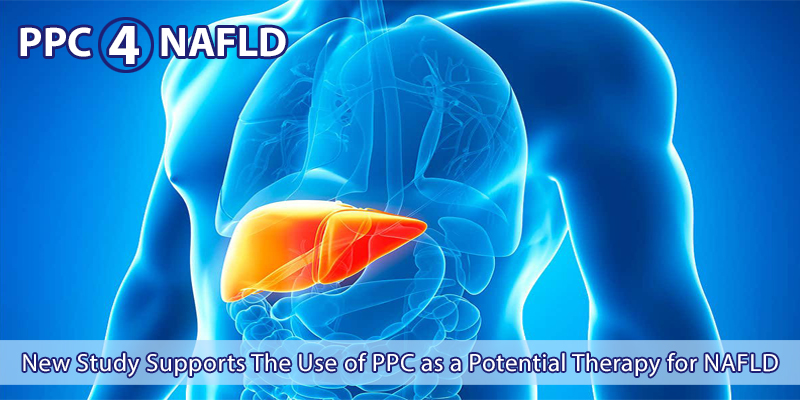Non Alcoholic Fatty Liver Disease – NAFLD
A Disease of Emerging Identity and Importance
NAFLD is now the most common liver disorder in the world with a prevalence rate ranging from 6% to 35% of the general population, and a median rate of 20%. There is strong evidence that the occurrence of NAFLD is increasing and is likely to correspond to regional trends in over nutrition, obesity, type 2 diabetes, and metabolic syndrome.
NAFLD equally affects both sexes. Although, it is most common in over-weight and obese persons and in patients with adult onset (type 2) diabetes, it can also be present in lean persons and in overweight children and adolescents.
NAFLD represents a spectrum of hepatic disorders characterized by macrovesicular fatty liver, with histology ranging from steatosis (fatty liver) to non-alcoholic steatohepatitis (NASH), to NAFLD-associated cirrhosis and to hepatic cancer. In addition to being a disease of the liver, NAFLD is associated with an increased risk of type 2 diabetes mellitus, chronic kidney disease, and cardiovascular disease, with the latter being the most common cause of death in patients with NAFLD.
It is the risk of progression from fatty liver as a benign disorder to liver disease with inflammation, fibrogenesis and cell death that makes NAFLD a medical challenge, as an established therapy is not yet available.
One of the compounds in the focus of investigation is polyenylphosphatidylcholine (PPC) from soybean (Phoschol®). As the non-toxic PPC is widely used in membrane-associated hepatic diseases (for example by alcohol, medicaments, and pollution), its effectiveness on NAFLD was also anticipated.
The use of highly purified phosphatidylcholine as EPL (essential phospholipids – 76% + PC) and PPC (polyenyl-phosphatidylcholine – 100% PC) is well established. Hundreds of clinical studies and thousands of pharmacological investigations confirm PPC is a superior liver protectant. And seventy (70) years of use worldwide and billions of doses administered for liver and cardiovascular disorders has clearly demonstrated that PPC is a safe and effective therapy or adjunctive therapy.
PPC described in a leading medical textbook: Hepatology
“Based on these pharmacological and clinical data, PPC would appear to be the drug of choice for significantly reducing or abolishing fatty liver of different origin, e.g. due to alcohol, or obesity, even if the causing noxa cannot be eliminated, as is the case with diabetes-associated steatosis.”
Dr. E. Kuntz and Dr. H.-D. Kuntz: Hepatology – Textbook and Atlas-.3rd Edition, 2008
New Study Highlights the Significance of PPC as a Potential Therapy for NAFLD
“Effectiveness of phosphatidylcholine as adjunctive therapy in improving liver function tests in patients with non-alcoholic fatty liver disease and metabolic comorbidities”
Study Objective
“Non-alcoholic fatty liver disease (NAFLD) is the most common cause of abnormal results of liver function tests. Earlier research showed that polyenylphosphatidylcholine (PPC) has hepatoprotective effects and thus can be used for the treatment of NAFLD and the prevention of its progression. Accordingly, the aim of this observational study was to evaluate if PPC administered as adjunctive therapy in routine clinical practice can effectively improve liver function tests of NAFLD in Russian patients with associated metabolic comorbidities.”
Study Highlights
What is already known about this subject?
►► “Non-alcoholic fatty liver disease (NAFLD) is currently the most common cause of abnormal results of liver function tests.
►► Aspartate aminotransferase (AST), alanine aminotransferase (ALT), and gamma-glutamyl transferase (GGT), which are markers of liver injury, are still considered as useful surrogate measures of NAFLD for clinical practitioners; recently, however, their diagnostic value has been challenged.
►► Previous research has indicated that polyenylphosphatidylcholine (PPC) might have a positive influence on liver enzyme levels, as well as on serum lipid profile.
What are the new findings?
►► PPC administered as adjunctive therapy in patients with NAFLD with metabolic comorbidities consistently lowered AST, ALT and GGT levels, irrespective of the nature and number of associated comorbidities.
►► Although a low rate of achieving total cholesterol levels below 5.0 mmol/L was noted at the end of the study in the overall patient population, significant improvements in lipid parameters were observed in both patients receiving PPC only and in those receiving PPC in addition to statins and/or fibrates.”
How might it impact on clinical practice in the foreseeable future?
►► “PPC has a promising role in the management of both NAFLD and its extrahepatic manifestations, including abnormal liver enzyme and lipid levels.
►► Liver enzymes can be useful markers for monitoring the progression of NAFLD over time. There is a need for further investigation on the association of liver enzymes with NAFLD, which might help improve the diagnosis, management, and risk prediction of NAFLD progression and provide a more accurate indicator for chronic metabolic liver injury.
►► Individualized intervention strategies should be adopted in Russia to improve the management of patients with NAFLD with associated dyslipidemia.”
Study Conclusions
“Adjuvant treatment with PPC resulted in consistent improvements in liver enzymes in patients with newly diagnosed NAFLD and associated metabolic comorbidities. The results of the study suggest that PPC adjunctive therapy is effective in improving liver function markers of NAFLD in patients with associated metabolic comorbidities and that PPC might have a positive impact on serum lipid profile.”
References:
- Maev IV, Samsonov AA, Palgova LK, et al. Effectiveness of phosphatidylcholine as adjunctive therapy in improving liver function tests in patients with non-alcoholic fatty liver disease and metabolic comorbidities: real-life observational study from Russia, BMJ Open Gastroenterology, 2020;7:e000368. doi:10.1136/bmjgast-2019-000368





 Nutrasal,inc.
Nutrasal,inc. Nutrasal, Inc.
Nutrasal, Inc.